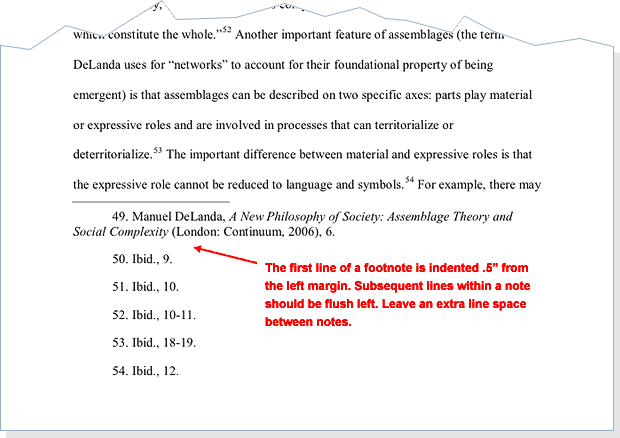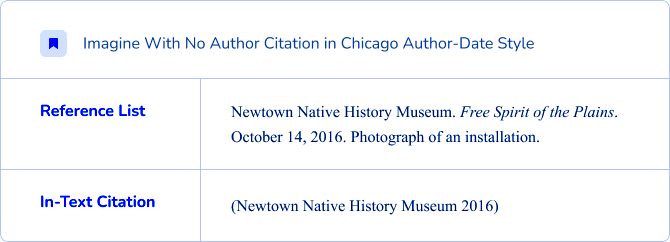Chicago style is a widely used citation format in various fields, especially in the humanities. It helps writers credit their sources, making it easier for readers to locate the original materials. Chicago style offers two main systems: the Notes and Bibliography style, often used in literature, history, and the arts, and the Author-Date style, commonly used in the sciences. Understanding how to cite sources correctly is essential for maintaining academic integrity and giving proper credit to the original creators.
Importance of Citing Images

Citing images is just as important as citing text sources. Here’s why:
- Credibility: Proper citation lends authority to your work, showing that you’ve done your research.
- Respect for Creators: Citing images acknowledges the hard work of photographers and artists, giving them the credit they deserve.
- Prevention of Plagiarism: Citing sources helps you avoid plagiarism, which can have serious consequences in academic and professional settings.
- Facilitation of Further Research: Providing citation details allows readers to find and explore the original works.
Overall, citing images helps maintain transparency and respect in your writing, ensuring that both you and the original creators receive recognition.
Basic Format for Citing Images
The Chicago Manual of Style provides clear guidelines for citing images. The basic format varies slightly depending on the source type, but here’s a general overview:
- For a Book: Last Name, First Name. Title of Book. City of Publication: Publisher, Year of Publication.
- For an Online Image: Last Name, First Name. “Title of Image.” Website Name. Date of access. URL.
- For Personal Photographs: Last Name, First Name. “Title or Description of Photograph.” Year of Creation.
In your bibliography or reference list, make sure to include all necessary details to help readers find the original source. Always double-check the specific guidelines provided by your institution, as they may have particular preferences.
Citing Images from Books and Articles
When you want to cite an image from a book or an article, it’s important to provide all the necessary details. This ensures that your readers can locate the source easily. The Chicago style requires specific information that varies slightly depending on whether you’re citing an image in a bibliography or in a footnote. Here’s how to do it right.
For a footnote, the format is:
- First Name Last Name, Title of Book (City of Publication: Publisher, Year of Publication), Page Number.
In the bibliography, it changes slightly:
- Last Name, First Name. Title of Book. City of Publication: Publisher, Year of Publication.
If the image comes from an article, the format is similar:
- First Name Last Name, “Title of Article,” Title of Journal Volume Number, no. Issue Number (Year of Publication): Page Number, URL.
Always ensure you include page numbers where the image can be found to guide your readers effectively.
Citing Images from Websites
Citing images from websites can be straightforward if you follow the right format. Online images often lack some traditional citation elements, so it’s crucial to adapt your approach. Here’s how to do it according to Chicago style.
The basic format for an online image is:
- First Name Last Name. “Title of Image.” Website Name. Last modified Month Day, Year. URL.
For example:
- John Doe. “Beautiful Landscape.” Nature Photography. Last modified January 15, 2020. www.naturephotography.com/beautiful-landscape.
If the image does not have a specific title, you can provide a brief description instead. Make sure to include the date you accessed the image, especially if it’s subject to change.
Citing Personal Photographs
When it comes to personal photographs, the citation style is a bit different since they’re not published works. However, it’s still important to credit your own work, especially in academic settings. Here’s how to cite personal photographs in Chicago style.
The format is simple:
- First Name Last Name. “Title or Description of Photograph.” Year of Creation.
For example:
- Jane Smith. “Family Reunion.” 2023.
If you are including these photographs in your work, consider adding a note on the context of the image. This could be a brief explanation of the occasion or significance, enhancing the reader’s understanding.
Common Mistakes to Avoid
Citing images can be tricky, and it's easy to make mistakes. Being aware of common pitfalls can help you avoid these errors and ensure your citations are correct. Here are some frequent mistakes to watch out for:
- Omitting Details: Failing to include all necessary information, like the author’s name, title, and publication date, can lead to incomplete citations. Always double-check what you need to include.
- Incorrect Formatting: Each source type has a specific format in Chicago style. Be sure to follow the guidelines closely. Misplacing commas or italics can change the citation's effectiveness.
- Confusing Footnotes and Bibliography Entries: Remember that footnotes and bibliography entries have different formats. Make sure you use the correct one for the context.
- Not Citing Personal Images: If you’re using your own photographs, don’t forget to cite them. Many assume personal images don’t need citations, but it’s still good practice.
- Ignoring Updates: Websites and online images can change. If you access an image later, make sure to update your citation to reflect the latest details, including the date of access.
By keeping these common mistakes in mind, you can create accurate and reliable citations that enhance the credibility of your work.
FAQ
Here are some frequently asked questions regarding citing images in Chicago style that might help clarify any lingering doubts.
- What if there is no author listed? If an image does not have a clear author, start with the title. If the title is also missing, provide a description.
- Do I need to cite every image I use? Yes, every image used in your work should be cited to maintain academic integrity and respect for the original creator.
- How do I cite an image I found on social media? Treat it like an online image. Include the author's name, the title or description of the image, the platform, the date of posting, and the URL.
- Is there a difference between citing a print image and an online image? Yes, the formatting differs slightly. Always refer to the specific guidelines for each type.
Feel free to reach out for any further questions or clarification on image citations.
Conclusion
Citing images properly is an essential part of any academic or professional work. By using the Chicago style effectively, you can ensure that you give credit to creators and provide your readers with a clear path to original sources. Remember to follow the guidelines closely, avoid common mistakes, and always be mindful of the details in your citations.
Whether you’re using images from books, websites, or your own collection, correct citation practices enhance your credibility and respect for the original creators. So next time you incorporate an image, take a moment to cite it properly. It makes all the difference!

 admin
admin








